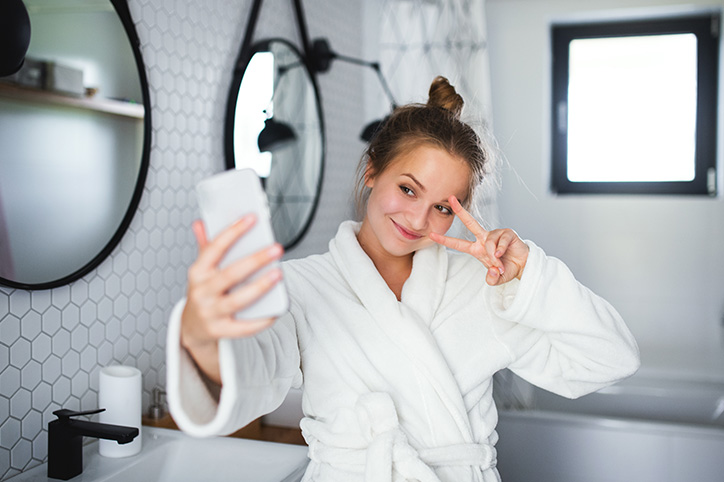Anyone who has dealt with skin issues for a long period of time is likely to tell you that it’s important to be conscious about what’s in the skincare you use. Years ago when I was dealing with acne that wouldn’t go away, I was told by dermatologist after dermatologist to go on prescription medication. I refused. Finally I connected with Dr. Dennis Gross who told me to simply stop using skincare with oil – a week later my skin was clear. Bottom line: Ingredients matter!
Acne may be a common skincare problem, but that doesn’t make it easier to deal with. For teenagers in particular skincare issues, like acne, can lead to depression, bullying, and more. Plus, sunscreen is a year-round must, even for teens.
To find out more about how to optimize the ingredients in teen skincare products we spoke to ingredient whiz Deborah Kilgore, the global director of skincare knowledge at Paula’s Choice. Here’s here take on the four best and four worst skincare ingredients for teens.
- Salicylic acid (also known as BHA or Beta Hydroxy Acid): “Unlike abrasive scrubs that can be damaging to skin, salicylic acid mimics skin’s natural exfoliation process by helping it to shed built-up dead skin cells while unclogging and clearing pores. If even, blemish-free, ultra-glowy skin is the goal, salicylic acid is a top choice.”
- Niacinamide (also known as vitamin B3): “Along with regulating oil production and helping pores appear smaller and smoother, niacinamide is a potent skin-restoring antioxidant that helps younger skin protect itself against daily environmental stressors. It’s great for all skin types, making it the perfect addition to any routine.”
- Azelaic Acid: “Backed by years of research, this multi-tasking ingredient targets a variety of skin care concerns common to teens including blemishes, bumps, and redness as well as the discolorations often left behind after a blemish is gone. For anyone dealing with a variety of skin concerns, this gentle, go-to ingredient is a must-have.”
- Zinc Oxide/Titanium Dioxide: “These broad-spectrum, mineral sunscreen actives work in skin’s upper layers to fend off the sun’s harmful UV rays which can lead to discoloration, uneven skin tone and more. Both have minimal to zero risk of irritation making them a great option for sensitive, reactive, and even blemish-prone skin types.”
- SD alcohol (also known as denatured alcohol): “While some may believe this ingredient can help dry up blemishes or tackle oiliness, the truth is that denatured alcohol robs skin of natural substances that keep it hydrated and healthy. This can lead to surface dehydration and dryness and even increased oil production as the skin tries to protect itself.”
- Witch hazel: “While this plant-based ingredient does have some soothing and antioxidant properties, it tends to be loaded with skin-drying alcohol, tannins and a volatile oil called eugenol – all which can be sensitizing, irritating and over time will weaken skin’s barrier.”
- Essential oils: “Wafting scents like citrus and eucalyptus can be soothing for aromatherapy, but when applied to skin, essential oils contain compounds that can irritate and damage skin. While irritation may not be noticeable right away, damage can be occurring below the skin with each use.”
- Menthol: “This naturally occurring ingredient derived from peppermint is known for its cooling and analgesic properties. That may sound enticing but the truth is that menthol can trigger sensitivity and irritation on the skin and eye area making it an ingredient we suggest avoiding.”








